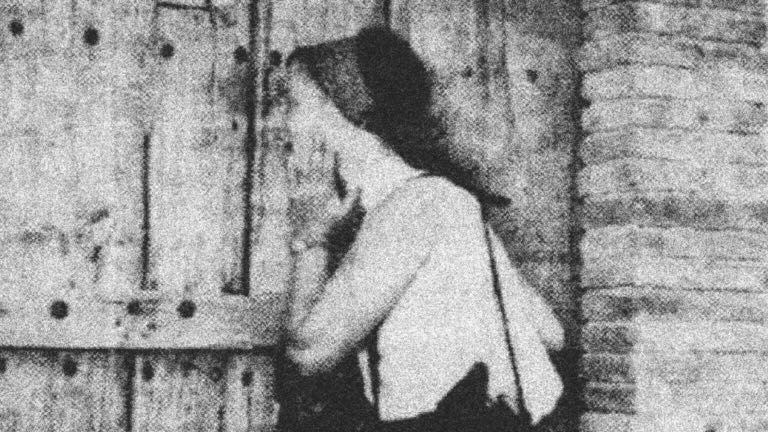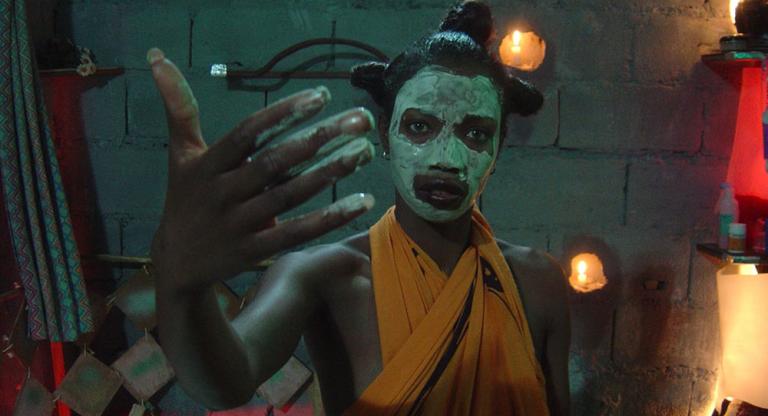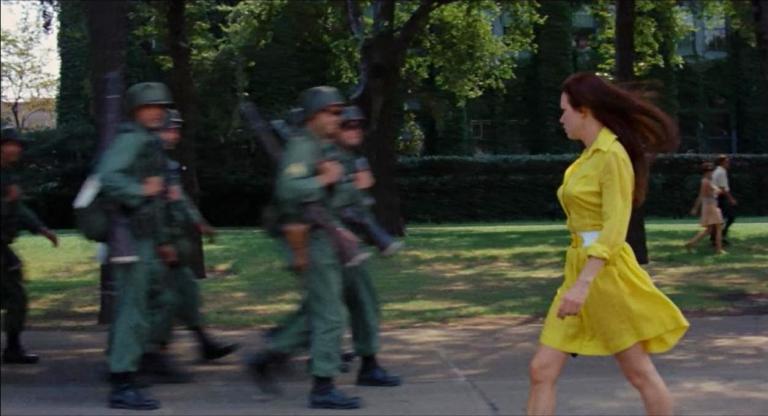In 1961, Bruce Baillie, a New American Cinema filmmaker, founded the San Francisco Cinematheque where the Crossroads Film Festival, now in its fifteenth year, continues to showcase an eclectic array of international, boundary-pushing cinema from both established and emerging filmmakers. “Crossroads is a film festival with range,” affirms Jenelle Stafford, whose film dissolution (2022) screened at the festival last year. “Within the same program you can be transported by atmospheric 16mm cinema or have your body worked over by live digital flicker performance.”
Crossroads’s curation teems with formal and narrative diversity to both offset, and address, anthropocentric unease. Featuring programs entitled “utopia springs from fertile soil,” “We Spoke of Dust,” and “O’er the Land,” the festival foregrounds materiality, whether filmic, telluric, or industrial. Films like Christopher Thompson’s Foot to Ground (2024) combine these various material aesthetics to critical ends. Foot’s opening shots flash between geometric close-ups of buildings’ exteriors to computer surveillance footage of high-rise interiors. By (re)capturing surveillance footage on 16mm, an inherently anti-capitalist time-based medium, Thompson comments on the vacuousness of neoliberal luxe.
Ayanna Dozier’s Bounded Intimacy (2024), shot on Super 8, opens with an aerial shot of New York City reminiscent of Francis Ford Coppola’s The Conversation (1974), before homing in on a woman performing for the camera. This exchange, between woman and machine, comments upon capital, sex work, and the politics of the gaze. While Super 8, like 16mm, evokes another era, the film’s questions about power and gender are as old as dirt. Old and new also coalesce in Pedro Maia’s March of Time (2023), which (re)creates the distressed look of cellulose nitrate through machine learning algorithms. Though filmmakers like Bill Morrison revel in the decomposition of celluloid as a time-based medium, Maia’s digitization plucks these images from time’s forward momentum, simultaneously evoking the past, while abandoning the technologies heretofore utilized to generate indexical images.
Other notable films that underscore image-making instruments as anachronistic or ancillary include Laura Kraning’s ESP (2024), which is mediated by a malfunctioning inkjet printer, and Tristen Ives’s cloud film (2024), which is composed of ray-o-grams on celluloid. While ESP’s glitch aesthetic celebrates what Hito Steyerl coined “the poor image”—the circulation of low-quality or imperfect images with technical flaws—cloud film renders the camera useless. The images we see in it are photographic prints exposed to light on photosensitive paper. In the face of climate change, our instruments, Ives suggests, will not save us; all that will be left are the elements: darkness, shadows, and light.
Unlike cloud film, Craig Scheihing’s stunning short, to open a window (2023), delights in all the scintillating possibilities shooting on film possesses. Using a flicker effect by sandwiching images together one- or two-frames at a time, Scheihing animates still images that flash rhythmically between the titular window and a woodland scene. A spider web suspended in sunlight supplants the delicate umbels of a Queen Anne’s Lace; the window seems to brim with flora in a frenetic flash between separate frames. Similarly, in Agnès Perrais’s exquisite Terre Rogue, Terre Noire (2024) superimpositions abound. The double exposure of wildflowers against a rolling hill in soft-focus conjures an idyll dreamscape. The print stock, yielding high-contrast images, amplifies the luscious sheen of waves and wild grasses. Schneihing and Perrais demonstrate that even in late-stage capitalism we are not ready to abandon the 20th century technologies that transform light slants into landscapes just yet.
Morgan Quiantance’s Efforts of Nature (2023), one of the most riveting films featured at this year’s festival, incorporates a wider array of registers to address social histories and the sublimity of the natural world. Whether it's a voice-over of the poet Yusef Komunyakaa reading “Facing It” or satellite imagery, Quaintance foregrounds historical memory and environmental concerns. If media, as John Durham Peters writes in The Marvelous Clouds, are environments and environments are also media, then the sea and sky in Efforts of Nature communicate systems of order that are increasingly disturbed, and irrevocably altered, by human hands. At the end, a shot from a car windshield shows a vehicle crash into a telephone pole that subsequently sparks an electrical fire. This sequence, at once beautiful and terrifying, recalls the opening scene of the solar system similarly captured with low resolution. In both, pin pricks of light, natural and man-made, pierce the nightscape.
Ross Meckfessel’s Spark from a Falling Star (2023) could be the dystopian universe born out of the fire at the end of Quiantance’s film. Using synth soundtracks, and including excerpts from Abel Ferrara’s Body Snatchers (1993), Spark is a disquieting film that primarily features urban spaces at night. Close-ups of an actor’s arm and neck show a perpetual sense of dismemberment and violence takes place on the periphery of each frame. Through Meckfessel’s framing, urban living becomes uninhabitable for these actors: no one can fully embody the frame. Meckfessel amplifies this unease through a POV-shot of a driver coasting down a deserted road that evokes the eponymous lost highways of David Lynch’s 1997 film. Roving aerial shots also survey the film’s cityscapes, empty of pedestrians, with restless paranoia. The horrors housed in these apartments and skyscrapers is the emptiness and alienation of modern life.
Mary Helena Clark’s Exhibition (2023) closes the final Crossroads program, entitled “an exit sign out of focus (in memoriam to identity).” If we wish to think of experimental film festivals, both at home and abroad, as their own particular ecosystems, Clark, like Quaintance, celebrates the heterogeneity of collage aesthetics. In Exhibition, Clark organizes quotations from Sigmund Freud, Mary Richardson, and Lisa Robertson in such a way that the polyphonic text asks us to reconsider our relationship to citation and meaning in (w)holes. It is fitting that Clark’s film completes Crossroads since the festival recurrently favors affective and variegated authorial approaches to explore Anthropocene concerns. If the question is no longer “what is cinema?” but “where is cinema?”—to quote Dennis Lim—Crossroads’ programming suggests a “bidirectionality of history” where new filmmakers evoke the past in order to proliferate new possibilities for the future.
Crossroads 2024 is the fifteenth manifestation of SF Cinematheque’s annual film festival. The festival, running Friday, August 30, through Sunday, September 1, at Gray Area, features 75 works of film and video by 68 artists representing 19 countries and territories presented in 10 curated programs. Screen Slate is proud to be a community partner for program 6 on Saturday night.





